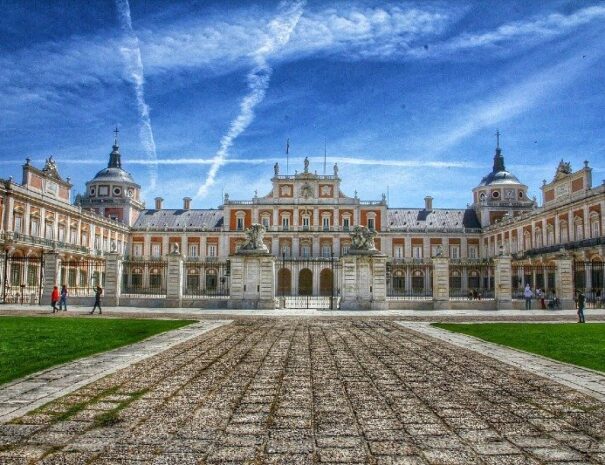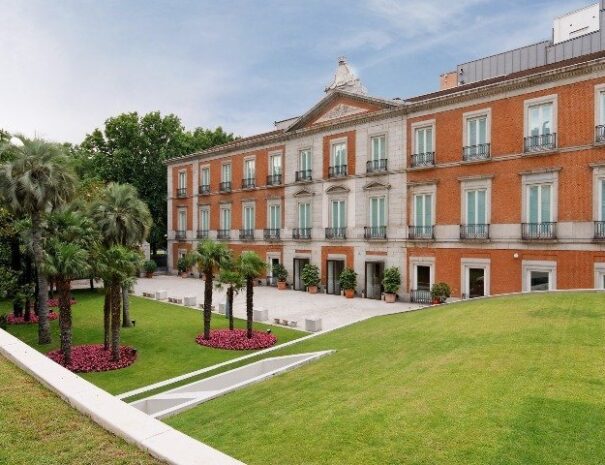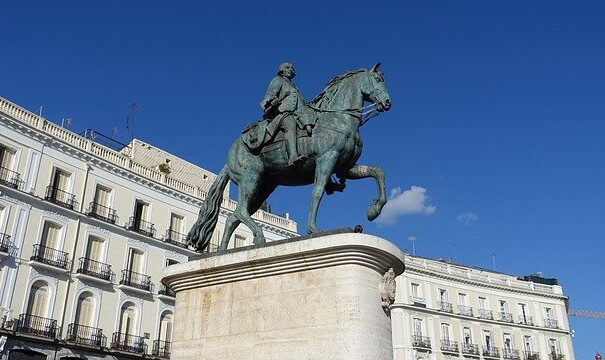Reina Sofia Museum in Madrid
- ATTRACTIONS
- MADRID
Reina Sofia Museum – Complete visitors guide
Picasso, Dali and so much more!
The Museo Nacional Centro de Arte Reina Sofia is one of the most important museums of Madrid. It offers the visitor an extensive collection of Spanish modern art pieces.
Founded in 1992, the Reina Sofia Museum continues the periods that the Prado doesn’t, starting from 1881, the year of Pablo Picasso’s birth.
This museum offers the visitor pieces of art from important Spanish painters such as Pablo Picasso, Salvador Dali and Joan Miro. The most famous piece of the museum is the Guernica of Picasso, a piece of art which is so important that is actually one of Spain´s top tourist attractions by itself and for many of the tourists that arrive in Madrid the Guernica is “a must do in Madrid”
The history behind the Guernica is dark and cruel, and to admire the painting at the Reina Sofia gives us all the possibility to think about dark moments in history and the importance of making our small contribution to a better world.
Reina Sofia Fast track tickets
Small group - Guided Tour
Reina Sofía in Madrid
Plan your visit to the Reina Sofia
The Reina Sofía museum can be found in the small pedestrian square to the west of the Atocha Station.
The main entrance to this museum of contemporary art is located in the Sabatini building (the grey building) This building, before being a museum was used as a hospital. During your visit, you will be able to imagine the ancient reality of the museum looking at its corridors, stairs, and courtyard.
The museum can also be accessed through the Nouvel building (the impressive modern and red building), which was inaugurated in 2005 as part of the museum expansion.
Visiting hours of the Reina Sofía museum in Madrid are Monday and Wednesday to Saturday, from 10 a.m. to 9 p.m., and Sundays, from 10 a.m. to 7 p.m. The museum stays closed on Tuesdays (the closing date for most museums in Madrid is on Mondays)
The Reina Sofia museum offers a free entrance option from 19:00 to 21:00 Mondays to Saturdays and Sundays from 13:30 to 14:15. Only certain rooms may be accessible with the free entrance option.
The collection at Reina Sofia
The Reina Sofía museum was inaugurated in 1992. At around those dates Spain had many art museums but none that could be an important global landmark in contemporary art. Things have clearly changed since then and the number of museums devoted to contemporary art has increased exponentially with exceptional examples like the Guggenheim in Bilbao or the MACBA in Barcelona.
In 1990 the collection of the Reina Sofia was put together with the collection of the today defunct Spanish Museum of Contemporary Art and 20th-century works at the Prado Museum, which brought the major highlight of the Guernica.
Today, the collection at the Reina Sofía museum consists of over 30,000 works including paintings, sculptures, drawings, engravings and photographs. Only five percent of the collection is exhibited as part of the permanent collection.
Among the most important masterpieces at Reina Sofia you will find fantastic works by prestigious contemporary artists such as Picasso, Miró, Dalí, Juan Gris, Delaunay, Braque, Yves Klein, Motherwell or Bacon.
The permanent collection of the Reina Sofía museum is structured in three areas, the first with works from the first half of the 20th century, the second with works from 1945 to 1968, and the third with works made up to 1982. The museum holds regular temporary exhibitions, some of them have been amongst the most visited exhibitions in Spain.
OUR top 5 masterpieces at the Reina Sofia
El Guernica de Picasso
On April 26 of 1937, the town of Guernica in the Basque country suffered the first airplane bombing over the civilian population in history and Pablo Picasso was able to represent it so appropriately that his painting has been and will be an icon of war horror.
Visage du Grand Masturbateur
A painting that illustrates Salvador Dalí’s obsession with Gala. Dali had met her shortly before this painting was created and on it Dali painted what is considered to be a paradigm of his sexual obsessions. He created this painting at the end of the summer of 1929. Gala decided to stay in the town of Cadaqués with Dalí and Gala´s husband at the time, the poet Paul Éluard, returned alone to Paris.
Caracol, mujer, flor, Estrella
(Snail, woman, star, snail)
This work reflects Miró’s anguish over the foreseeable scenario of the rise of fascism in Europe. He painted this work in 1934. The optimism of his previous stage evolves into more dramatic paintings like this one, with more intensity in the colors and characters with longer and twisted shapes.
A World
This work attracts the attention of most visitors to Reina Sofia. Her author though is not as well-known as other artists in the Museum. Angeles Santos was only 17 years old when she painted this dramatic cubist painting of huge size (3 meters x 3 meters) Both its composition and the style fascinated the experts when the painting was presented at the Madrid Autumn Salon back in 1929
The Open Window
Juan Gris is the ultimate master of cubism. He created a series of “open windows”, a concept already developed by Matisse and Delaunay and that Gris shaped in the most original way, combining interior and exterior spaces in a cubist world.
There are many more interesting masterpieces at the Reina Sofia and we could have easily selected five other works or many more. The main idea of any art gallery is for the visitor to build his only list!
Video – Reina Sofia Museum
Other top art galleries in Spain
Art galleries are amongst Madrid´s main tourist attractions. Art lovers will not only find some of the world most important galleries, but also excellent smaller collections that focus on specific artists or styles.
But beyond Madrid, most larger cities in Spain have also excellent art museums. We copy below 4 of the many examples in the country. You can find more information on Spain´s top art galleries in this post where we have included a selection of the most important ones. But there are many more!
More interesting things in Madrid
You can find below more ideas to spend your getaway in Madrid. If you are interested in art we also recommend you this guide with Spain´s top art museums.

The Best Flamenco Shows in Madrid
Looking for the best Flamenco Shows in Madrid? Here you will find local insights with the best tablaos, shows and special offers … Read More

The Royal Palace of Aranjuez and Gardens
Check out our complete visitors guide to the Royal Palace of Aranjuez and it lush gardens. This spectacular estate is just a short drive from Madrid. … Read More

Museo Thyssen Bornemisza
Located at the heart of the Paseo del Prado, almost in front of the Neptune Fountain, the Thyssen-Bornemisza museum shares the limelight with two of the other art museums in Madrid: the Prado Museum and the Reina Sofía museum.
Since these three museums are located very close to each other, this area of Madrid has become popularly known as the Triangle of Art. … Read More

Puerta del Sol Madrid
Check out our full guide to the Puerta del Sol in Madrid, one of the “must see” sights in the city and the geographic center of Spain. … Read More
